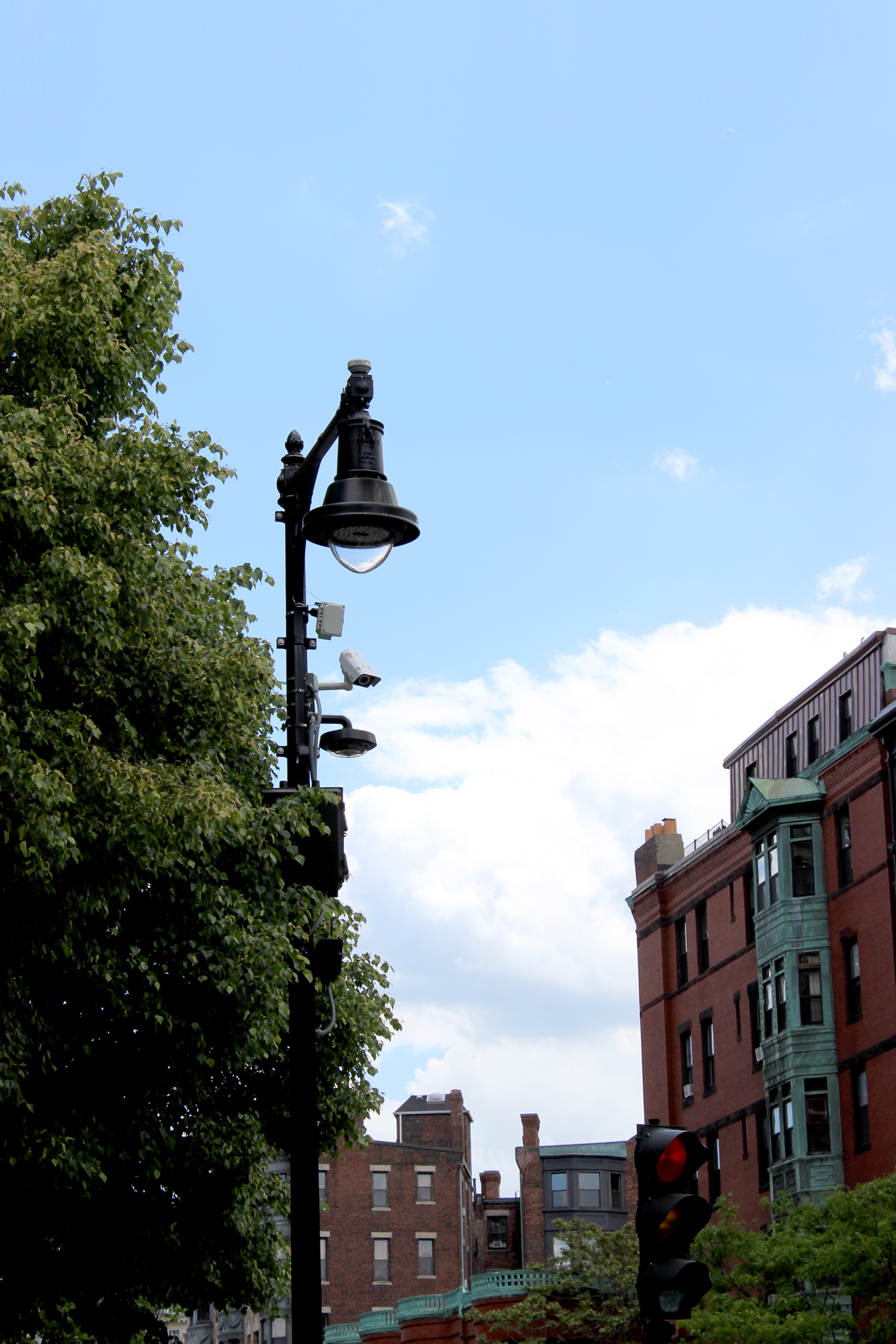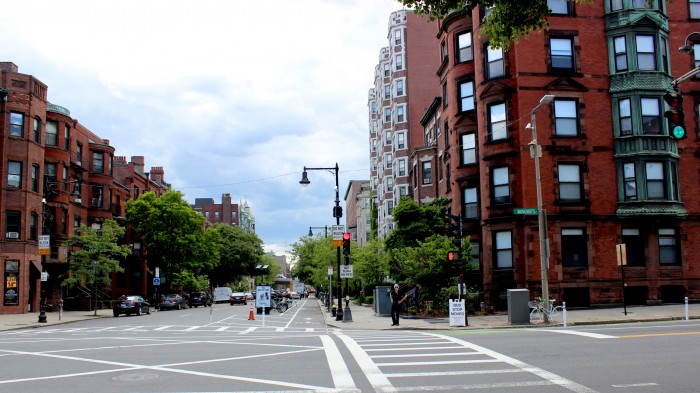How a Wireless Sensor System in the Busiest City Intersections Can Save Lives

Every city has at least one dangerous intersection where cars, trucks, and buses jostle for space with pedestrians and bicyclists, often resulting in injury, and sometimes death. Could a network of wirelessly connected cameras and sensors, combined with sophisticated algorithms that analyze how people are behaving on the road, make these junctions less hazardous?
Verizon is using Boston as a test bed to find out. In March, the tech giant began collecting car, bike, and pedestrian traffic data at one of the city’s most hectic intersections. Boston will use the information to redesign its streets, says Vineet Gupta, director of policy and planning for the Boston Transportation Department. The data can measure if interventions such as changing traffic signal timings or installing a bike lane have been effective, he adds.
Boston’s ultimate aim is to eliminate traffic fatalities citywide by 2030. If the project is successful, other cities could adopt similar “smart streets” technologies.

The data is being collected at the junction of Massachusetts Avenue, a four-lane road, and Beacon Street, a three-lane, one-way street. The intersection is located near a major bridge that links Boston to Cambridge. Sixteen pedestrians and bicyclists were seriously injured at this crossroads during 2015 and 2016, and one bicyclist was killed after colliding with a flatbed truck.
Like other cities, Boston typically collects traffic data manually and bases its traffic-management designs on industry standards rather than local information. To obtain more-accurate data, Verizon outfitted the intersection with 50 cameras and sensors, including “quad cameras”—each containing four smaller cameras that can pan, tilt, and zoom in different directions—and infrared cameras that can do thermal imaging, which is useful for discerning traffic activity in snow and rain. Below ground, Verizon installed dozens of magnetometer sensors that detect the velocity, number, and size of passing cars, trucks, and buses by registering a change in frequency when large metal objects move over them. Since most bikes don’t have enough conductive material to trigger the magnetometers, the site also has radars for sensing bicyclists.
Verizon correlates this sensor data with two other types of information: bus-location data provided by the city and software that can tell whether a traffic light is red, yellow, or green at a given time. The company’s algorithms parse these streams of information and look for “trigger” interactions, such as video footage of a car nearing a bike lane. Verizon then maps those data points to information from other sensors and determines whether it qualifies as one of the 12 complex traffic “events” the company is tracking for Boston. Most of these events relate to vehicles encroaching on crosswalks and bike lanes, failing to yield to pedestrians, and double parking. Verizon also counts the number of cars and bikes that run red lights, but the city has pledged not to use the information to issue tickets or enforce traffic laws. Verizon says it erases its video data after seven days and does not keep any records linked to individual people or vehicles.

The precision of the data enables the city to see which traffic incidents are of most concern in specific parts of the intersection on a day-to-day basis. For example, early results show that cars consistently fail to yield to pedestrians on the western side of the intersection, which is also the area where the bicyclist was killed in 2015.
The city says it plans to extend the smart-streets program to another half dozen intersections along Massachusetts Avenue so it can begin to understand how the road functions as a traffic corridor throughout downtown Boston. It may also add sensors that measure air quality to monitor and eventually reduce pollution.
Will other municipalities follow? Boston’s commitment to reduce traffic fatalities is part of the Vision Zero movement, which originated in Sweden in 1997 and has been adopted by more than 25 U.S. cities, among them Chicago, Los Angeles, New York, San Francisco, and Washington, D.C. Lani Ingram, vice president of Verizon’s Smart Communities division, says she hopes to sell similar systems to those cities. Verizon is currently trialing other smart-city technologies—such as light poles that can broadcast emergency announcements, and Wi-Fi-powered sidewalk kiosks that host information about local events—in Minneapolis; New Rochelle, New York; Sacramento, California; and Seattle.
Keep Reading
Most Popular
Large language models can do jaw-dropping things. But nobody knows exactly why.
And that's a problem. Figuring it out is one of the biggest scientific puzzles of our time and a crucial step towards controlling more powerful future models.
How scientists traced a mysterious covid case back to six toilets
When wastewater surveillance turns into a hunt for a single infected individual, the ethics get tricky.
The problem with plug-in hybrids? Their drivers.
Plug-in hybrids are often sold as a transition to EVs, but new data from Europe shows we’re still underestimating the emissions they produce.
Stay connected
Get the latest updates from
MIT Technology Review
Discover special offers, top stories, upcoming events, and more.